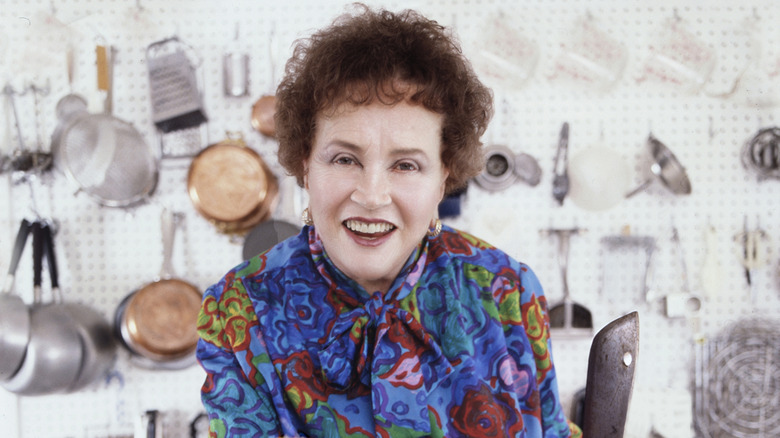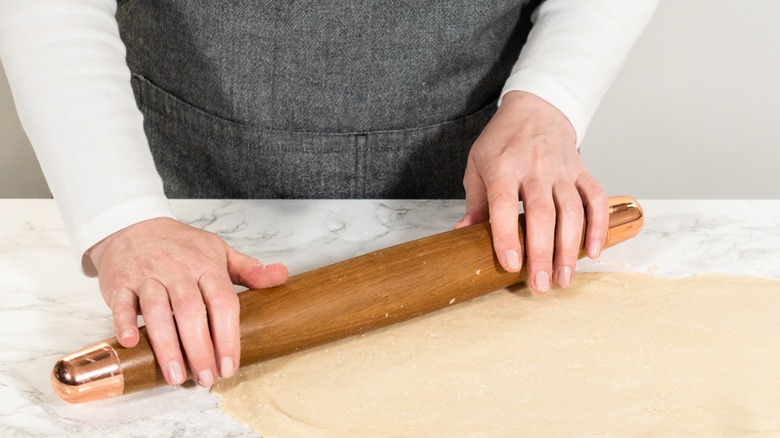Why Julia Child Swore By French Rolling Pins Over American Ones
In Season 3 of "The French Chef," Julia Child demonstrated how to roll out dough for croissants with several different types of large rolling pins. She then picked up a much punier American-style rolling pin and showed how difficult it is to use. Expressing her displeasure that it's "a silly kind of pin to have," and in what became an iconic Child moment, she tossed it into the trash. Child considered rolling pins "awfully important," and she was particularly enamored with a French rolling pin. She had a large collection of rolling pins, which she stored in a copper stockpot, and reportedly always grabbed the French rolling pin first.
As bakers know, an American-style rolling pin has a cylindrical center with two handles, sometimes with ball-bearings to facilitate the rolling motion. The ball-bearings can be difficult to clean, and the length of the dough is restricted by the short length of the cylinder. On the other hand, a French rolling pin is a simple wooden dowel between 17 and 19 inches long and can be straight or tapered, as is one of Child's French pins in the collection of her famous kitchen and kitchen utensils at the Smithsonian's National Museum of American History. A French rolling pin is also much easier and faster to clean than its American counterpart, which Child likely appreciated when filming her rapid-fire episodes of "The French Chef."
Julia Child let the French rolling pin do the work
Julia Child emphasized in that croissant episode that a rolling pin should be heavy and does all the work, and as she effortlessly rolls out the croissant dough to a perfectly smooth sheen, you can see she's right. A French rolling pin is designed to be rolled with the palms of your hands, which enables you to directly feel how hard you're pressing on the dough. Its length and weight make it easy to roll out dough to the same thickness. With an American-style rolling pin, however, all the pressure is put on the handles, so you can't judge how hard you're pressing down or if you're rolling out the dough evenly. Some bakers prefer the tapered French rolling pin over the straight dowel for better manipulation and control.
Child owned both, possibly acquired at Dehillerin, her favorite cookery store she discovered when living in Paris, where she purchased most of her kitchen equipment. Child used the same boxwood pin in most of her pastry shows, not only for rolling out dough, but also for whacking chilled dough and butter so they're malleable. Child also found the French pin useful for leveling off pie crust in a pie pan so it can be crimped evenly along the top and sides, the result of which renders a sturdy and attractive crust for quiche Lorraine or tarte Tatin.

